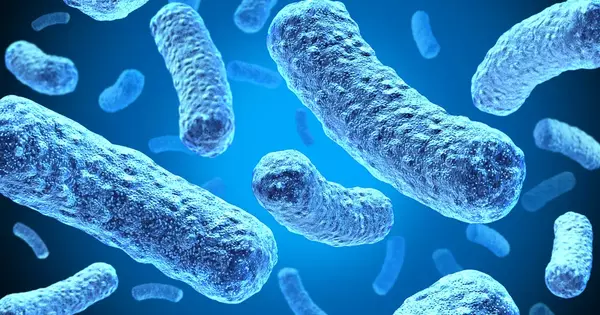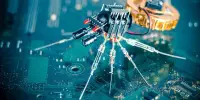Biohybrid batteries are a form of energy storage technology that mixes biological components with regular battery materials to generate a more ecologically friendly and sustainable power source. Efficient biohybrid batteries frequently rely on the unique features of biological organisms such as bacteria or enzymes to improve energy storage and conversion.
Formic acid is a viable energy carrier since it can be generated electrochemically from carbon dioxide. A Chinese research team has recently devised a fast-charging hybrid battery system that combines formic acid electrochemical generation as an energy carrier with a microbial fuel cell. This unique, fast-charging biohybrid battery system, as demonstrated by the scientists in the journal Angewandte Chemie, can be used to monitor the toxicity of drinking water, only one of many potential future uses.
Microbial fuel cells harness bacteria to generate electricity, exploiting the ability of some bacterial species to convert energy-rich molecules into electrical energy. In fully microbial batteries, bacteria also produce energy carrier molecules during the charging process, which are then used to generate electricity during the discharging process. However, one of the disadvantages of fully microbial batteries is that charging is still rather inefficient and slow.
Using widely accessible components, they created an electrolysis cell in which inorganic catalysts convert carbon dioxide gas into formic acid. Using this approach, the researchers discovered that the charging process takes only a few minutes.
Yong Jiang’s research team at the Agriculture and Forestry University in Fuzhou, China, and colleagues have developed for the first time a two-stage hybrid microbial battery system that overcomes many of the challenges faced by fully microbial batteries by coupling the purely inorganic electrochemical generation of a biologically active molecule with a microbial fuel cell.
The researchers also planned to create a biohybrid battery that would supply sustainable energy by utilizing simple and inexpensive components. They discovered that formic acid is a sustainable biological energy carrier since it can be created from carbon dioxide either biologically or electrocatalytically and subsequently consumed by the bacteria in the microbial fuel cell.

Biohybrid batteries are a type of energy storage device that combines biological components with synthetic materials to create a functional and sustainable power source. These batteries often leverage the unique properties of living organisms, such as bacteria or enzymes, to generate or enhance electrical energy production.
Using widely accessible components, they created an electrolysis cell in which inorganic catalysts convert carbon dioxide gas into formic acid. Using this approach, the researchers discovered that the charging process takes only a few minutes. Once formic acid has been created and removed from the electrolyte, it is fed into a second device, the microbial fuel cell, where bacteria slowly convert it into carbon dioxide and energy at the bioanode. This two-stage system generated enough current for a 25-hour discharge, which is very beneficial in many applications. The scientists used the discharge current created as a proof of concept to monitor water for toxins and discovered that the current signal altered when environmental contaminants such as formaldehyde and copper were introduced to the water. The researchers propose other uses in sustainable wastewater treatment or desalination.
















